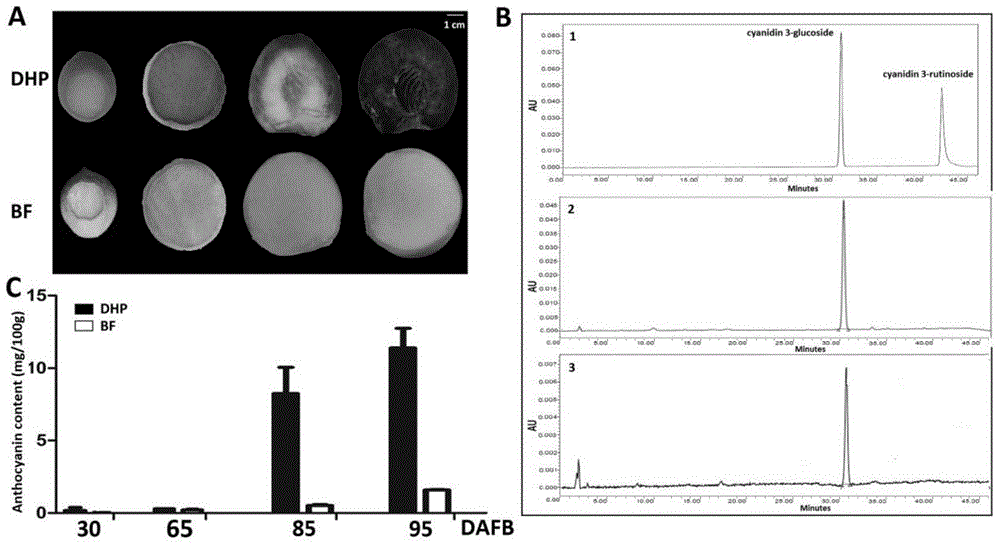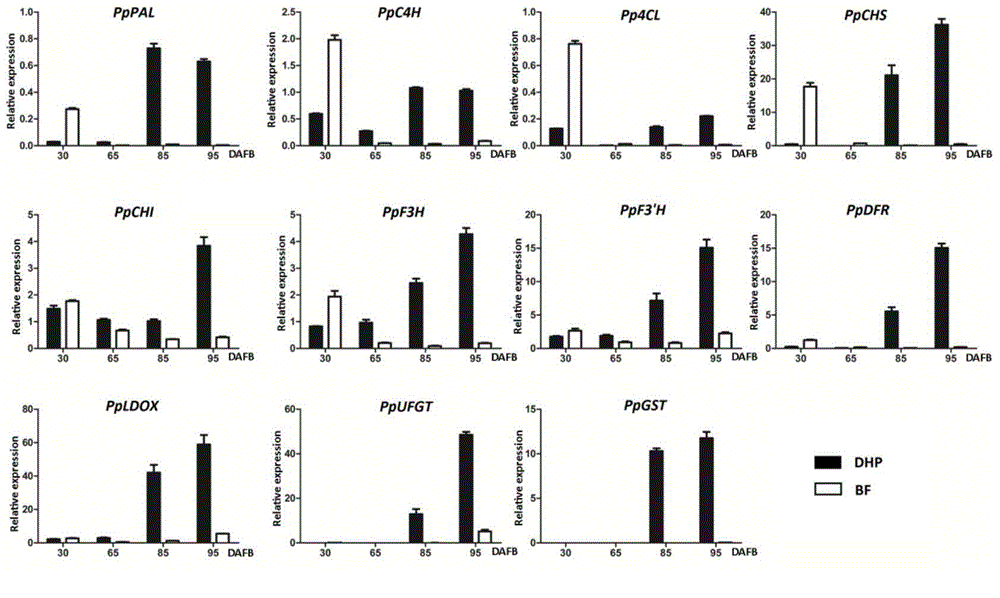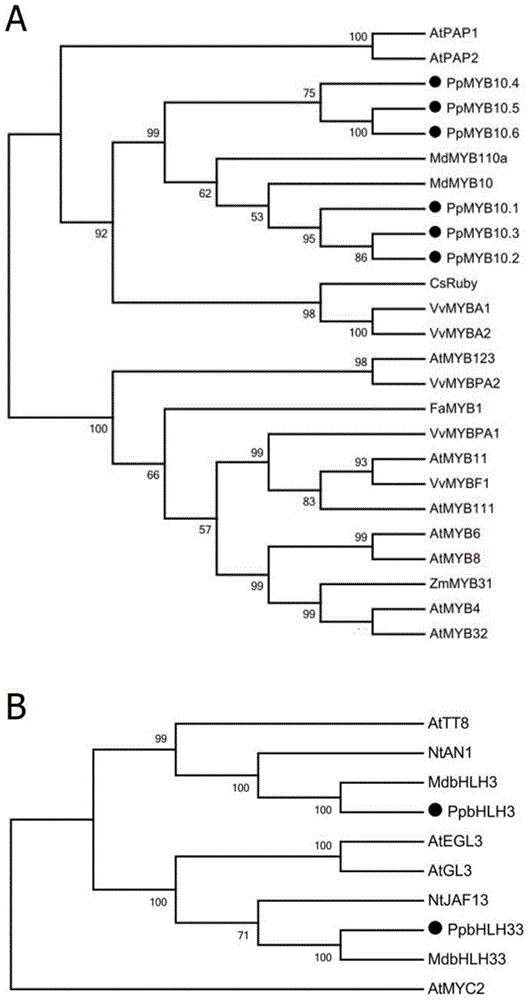Gene PpRd for regulating fruit flesh cyanin synthesis and application thereof
A technology of anthocyanins and pulp, applied in the field of plant genetic engineering and biology, can solve problems such as the inability to apply peach pulp genetic breeding, achieve the effects of improving breeding efficiency, easy realization, and saving breeding time
- Summary
- Abstract
- Description
- Claims
- Application Information
AI Technical Summary
Problems solved by technology
Method used
Image
Examples
Embodiment 1
[0053] Example 1: Extraction and determination of anthocyanins.
[0054] Take about 1 gram of peach pulp sample or 0.1 gram of tobacco sample, grind it with liquid nitrogen, and suspend it in 5 milliliters of precooled hydrochloric acid methanol (0.1% hydrochloric acid volume fraction) for 24 hours. Centrifuge at 3000g for 10 minutes, collect the supernatant, and evaporate to dryness in vacuum at 30°C on a rotary evaporator. The residue was resuspended with acidified deionized water (1.18 mM HCl) and transferred to a preconditioned CNWBOND LC-C18SPE column. Anthocyanins were eluted with 1 ml of methanol, filtered through a 0.22-micron membrane filter, and loaded for detection by high-performance liquid chromatography.
Embodiment 2
[0055] Embodiment 2: Real-time fluorescent quantitative PCR detects the relative content of gene transcripts
[0056] Approximately 0.2 g of the sample was ground with liquid nitrogen for RNA extraction. For RNA extraction, the plant polyphenol polysaccharide total RNA extraction kit from Beijing Zhuangmeng Company was used. Use 1.2% agarose gel to check the quality of RNA. RNA concentration was detected with a NanoDrop instrument. The first-strand cDNA was synthesized using the PrimeScript Reverse Transcriptase Kit (Bao Biology). The real-time fluorescence quantitative PCR system is 20 microliters, containing about 100 nanograms of cDNA, 0.2 micromole of each primer and 10 microliters of 2×SYBR premix Ex Taq TM (Bao Bio). The amplification program was as follows: pre-denaturation at 95°C for 30 seconds, followed by 40 cycles of amplification (95°C for 5 seconds, 60°C for 34 seconds). Each amplification well was replicated three times. The peach gene TEF2 was used as an ...
Embodiment 3
[0061] Example 3: Dual-luciferase reporter system detects the ability of transcription factors to activate promoters
[0062] Young N. benthamiana leaves were used as injection material. Activate Agrobacterium (GV3101) containing 35S-driven transcription factor vector or plant promoter vector containing pGreen 0800 in LB medium containing rifampicin and corresponding vector resistance at 28°C to OD 600nm The value is about 0.8, the bacteria are collected by centrifugation, and resuspended in the infection solution (10 mmol MgCl 2 , and 100 micromolar acetosyringone). Use a 1 ml sterile needle-free syringe to inject the infection solution containing bacteria into the leaves of N. benthamiana. Luciferase activity was detected after 2-3 days. The kit used was DLAR-2 kit (Targeting Systems, USA).
PUM
 Login to View More
Login to View More Abstract
Description
Claims
Application Information
 Login to View More
Login to View More - R&D
- Intellectual Property
- Life Sciences
- Materials
- Tech Scout
- Unparalleled Data Quality
- Higher Quality Content
- 60% Fewer Hallucinations
Browse by: Latest US Patents, China's latest patents, Technical Efficacy Thesaurus, Application Domain, Technology Topic, Popular Technical Reports.
© 2025 PatSnap. All rights reserved.Legal|Privacy policy|Modern Slavery Act Transparency Statement|Sitemap|About US| Contact US: help@patsnap.com



